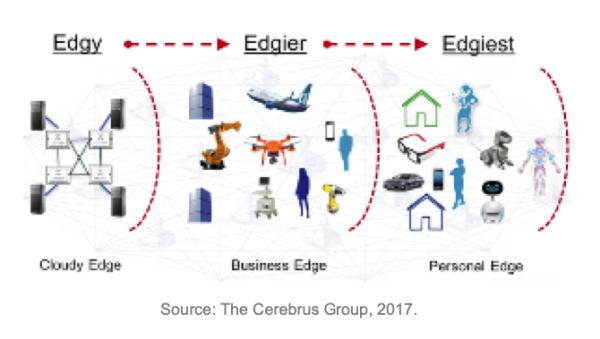On edge computing, the environment, and village life
Here is one more thing that, will you nil you already impacts your environment and quality of life
“Edge Computing” is one of the hottest buzzwords in the digital services industry these days. In plain English, edge computing is a way to “bring the data and the compute closest to the point of interaction” with their end users, by making the storage and processing of those data happen locally, as physically close as possible to the same users. Cloud computing, instead, is about processing data in many less, centralized and remote data centers (*).

<u><em><strong>CAPTION:</strong>
<a href="https://www.thegreengrid.org/en/newsroom/blog/buzzwords-reality-cutting-through-hype-provide-edge-computing-clarity-data-center" target="_blank">Image source: From Buzzwords to Reality [about] the Hype to Provide Edge Computing</a>
</em></u>
Edge computing means spreading many small data centers everywhere, instead of relying on very few huge facilities inside big cities, or other special locations. What is the impact of edge computing on the places where it is deployed? Especially in rural, or otherwise environmentally fragile communities?
In this post, I sketch how to look for complete answers, by summarizing the main conclusions of a report released in May 2019 about “The spatial and energy impact of data centers on the territories”. As in every other fact of life, there are good and bad consequences.
Energy disruption, waste, potential pollution
Data centers (especially when they are spread for edge computing!) are potentially disruptive of local energy systems, and their accumulation in urban areas as their spreading in rural ones are a concern for urban and regional planning. Data centers often use backup generators powered by fossil fuels. In general, there is still no “discourse on the energy and digital sobriety needed [from the data center industry] to remain under the prospect of an increase in worldwide temperatures of 1.5 C”
In many cases, there is an unnecessary pressure on electricity systems. Data centers… “generally ask for greater power than what they will actually need”, at least in their first years.
Urban sprawl, just worse
“Data centers reinforce the urban hierarchies in place,and favor urban sprawl in semi-urban and rural areas”. Edge computing can hardly improve this situation. The opposite is probably true.
Better robustness, possibly better services
[Local data centers] can be “calibrated closer” to the real needs of their actual users. Besides, they can be more resilient to climate events and computing attacks, because less technically centralized and less spatially concentrated.
Opportunities to reduce waste, contribute to the local grid
“The waste heat discharged by data centers comprises a source of energy recoverable for other uses… However, very few projects have reached this stage.”
(*) (link added on July 31st) for a longer explanation of what edge computing is, and why it is getting more attention than cloud computing, read here
Who writes this, why, and how to help
I am Marco Fioretti, tech writer and aspiring polymath doing human-digital research and popularization.
I do it because YOUR civil rights and the quality of YOUR life depend every year more on how software is used AROUND you.
To this end, I have already shared more than a million words on this blog, without any paywall or user tracking, and am sharing the next million through a newsletter, also without any paywall.
The more direct support I get, the more I can continue to inform for free parents, teachers, decision makers, and everybody else who should know more stuff like this. You can support me with paid subscriptions to my newsletter, donations via PayPal (mfioretti@nexaima.net) or LiberaPay, or in any of the other ways listed here.THANKS for your support!